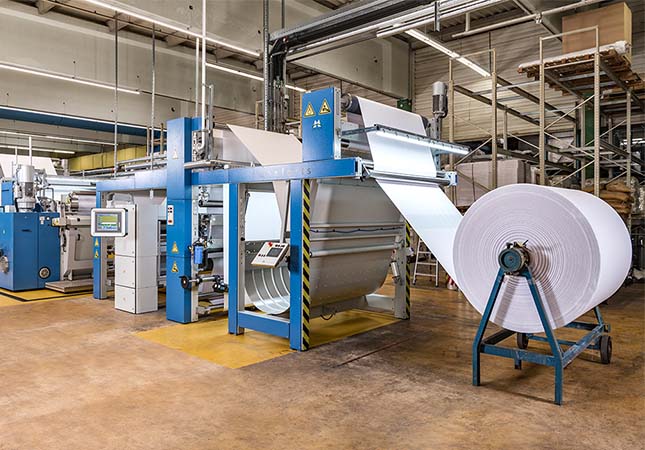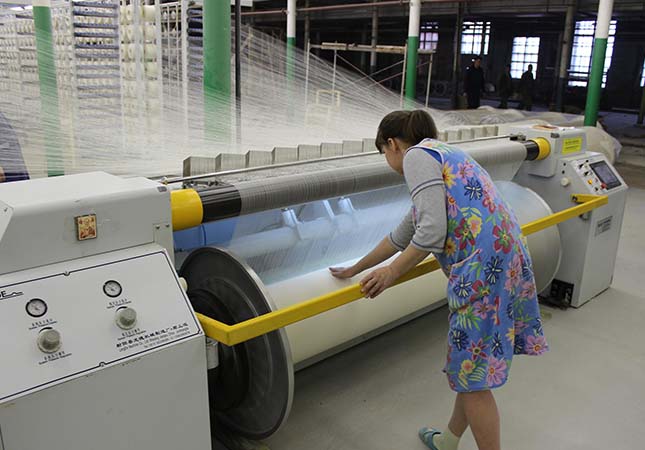A fabric cutting machine is a tool widely used in the textile industry, which could cut the fabric into smaller shapes and pieces to meet the requirements of the manufacturers. The usage of the fabric cutting machine has revolutionized the textile industry because the manufacturers could achieve the increasing demands for customization and sustainability in the industry with the help of the machine.

How Fabric Cutting Machines Transforming the Textile Industry
The fabric cutting machine has become an essential tool for textile manufacturers, allowing them to meet the increasing demand for high-quality textiles in various industries, including fashion, home textiles, automotive, and more. There are details about how the fabric cutting machine transformed the textile industry.
1. Increased Efficiency and Productivity
The fabric cutting machine has greatly increased the efficiency and productivity of textile manufacturing processes. Traditionally, fabric cutting was done manually, which was time-consuming and labor-intensive. However, with the introduction of the fabric cutting machine, the cutting process has become automated, allowing for faster and more accurate cutting of fabrics in a fraction of the time. The fabric cutting machine is which significantly reduces the time required to cut large volumes of fabric, increased efficiency, and productivity have enabled textile manufacturers to meet tight production deadlines and increase their overall output.
2. Improved Accuracy and Precision
Precision is crucial in the textile industry, as even a minor deviation in the cutting process can result in fabric wastage and affect the final product's quality. The fabric cutting machine is equipped with advanced cutting technologies, such as laser cutting or ultrasonic cutting, which offer high precision and accuracy in cutting fabrics. Additionally, a fabric cutting machine can be programmed to cut fabrics according to specific measurements or patterns, ensuring consistent and precise cutting results. This level of accuracy and precision has led to improved product quality and reduced fabric wastage, resulting in cost savings for textile manufacturers.
3. Enhanced Flexibility and Customization
The fabric cutting machine has also increased the flexibility and customization options for textile manufacturers because it can cut fabrics of various types, including woven, knitted, non-woven, and technical textiles, making them suitable for a wide range of applications. It can also cut fabrics of different thicknesses and densities, allowing manufacturers to work with a diverse range of materials. Fabric cutting machine can also cut fabrics into various shapes and sizes, providing greater customization options for designers and manufacturers, which has led to the production of unique and innovative textile products that cater to the changing demands of consumers.
4. Reduced Labor Costs and Improved Safety
Fabric cutting machine has also led to reduced labor costs and improved safety in the textile industry. Manual fabric cutting requires skilled labor, and the cost of labor can be a significant portion of the overall production cost. Fabric cutting machine automates the cutting process, reducing the dependence on manual labor and associated labor costs. Moreover, fabric cutting machine has safety features, such as sensors and guards, which minimize the risk of accidents during the cutting process. All of this has led to improved safety in the workplace and reduced the occurrence of accidents related to fabric cutting, further benefiting the textile industry.
5. Minimized Fabric Wastage and Cost Savings
Fabric wastage is a major concern in the textile industry, as it directly affects the production cost and profitability of textile manufacturers. Manual cutting often results in fabric wastage due to errors in measurements or inconsistent cutting. Fabric cutting machine has significantly minimized fabric wastage by providing accurate and consistent cutting results, optimizing the cutting process by nesting the fabric pieces closely together, maximizing the utilization of the fabric, and reducing wastage, which has resulted in cost savings for textile manufacturers, as they can minimize fabric wastage and utilize more of the fabric roll, thereby reducing material costs and increasing profitability.

How Fabric Cutting Machine Meets the Increasing Demands for Customization and Sustainability
Fabric cutting machine has played a crucial role in enabling textile manufacturers to meet these increasing demands, transforming the textile industry in significant ways.
l Customization has become a key trend in the textile industry, with consumers seeking products that reflect their individuality and style. Fabric cutting machine has empowered textile manufacturers to offer customized textile products by providing greater flexibility in cutting fabrics into various shapes, sizes, and patterns. The machine can be programmed to cut fabrics according to specific design requirements, allowing manufacturers to create unique and personalized textile products. Whether it's customized apparel, home textiles, or automotive textiles, fabric cutting machine have made it possible for manufacturers to cater to the diverse preferences of consumers.
l Fabric cutting machine has also enabled textile manufacturers to adopt more sustainable practices in the industry. Sustainability has become a critical concern for consumers and the textile industry as a whole, with increasing awareness about the environmental impact of textile production. Fabric cutting machine has helped reduce fabric wastage, as they optimize the cutting process by nesting fabric pieces closely together, maximizing fabric utilization and minimizing wastage. Additionally, fabric cutting machine can be programmed to avoid cutting certain areas of the fabric that may have defects, further reducing fabric wastage and improving sustainability.
l Furthermore, fabric cutting machine has facilitated the use of recycled or upcycled fabrics in textile production. The machine can easily handle fabrics of different types, including recycled or upcycled fabrics and cut them with precision, which has allowed manufacturers to incorporate sustainable materials into their textile products, meeting the increasing demand for eco-friendly textiles. Fabric cutting machine has also made it possible to create innovative and sustainable textile products, such as zero-waste designs, where the fabrics are cut in a way that minimizes or eliminates any wastage, contributing to a circular economy approach.
l In addition to customization and sustainability, fabric cutting machine has also contributed to the streamlining of the supply chain and faster time-to-market for textile manufacturers. The machines automate the cutting process, reducing the dependency on manual labor and speeding up the production process, which has resulted in shorter lead times and faster turnaround times, allowing manufacturers to respond quickly to changing market trends and consumer demands. Fabric cutting machine has also enabled manufacturers to optimize their inventory management by cutting fabrics based on demand, reducing excess stock, and minimizing inventory costs.
l Moreover, fabric cutting machine has improved the overall quality of textile products. Manual cutting can often result in inconsistent cutting, leading to uneven edges or irregular shapes, which can affect the final product's quality. Fabric cutting machine offers precise and accurate cutting results, ensuring consistent and uniform shapes and edges in the fabric pieces. So the fabric roll cutting machine has improved product quality and enhanced brand reputation for textile manufacturers, as they are able to deliver high-quality textile products to their customers.
l Another significant impact of fabric cutting machine on the textile industry is the reduction of labor costs. Manual cutting requires skilled labor, and the cost of labor can be a significant portion of the overall production cost. Fabric cutting machine automates the cutting process, reducing the dependency on manual labor and associated labor costs. The benefits of cost savings for textile manufacturers, allow them to allocate resources to other areas of the production process or invest in advanced technologies for further automation and efficiency.
Conclusion
In conclusion, fabric cutting machine has transformed the textile industry by enabling textile manufacturers to meet the increasing demands for customization and sustainability. As a famous textile machinery supplier, the SUNTECH fabric roll cutting machine is very competitive all over the world, it’s an ideal choice for manufacturers in the textile industry.




